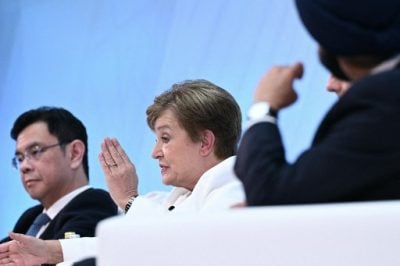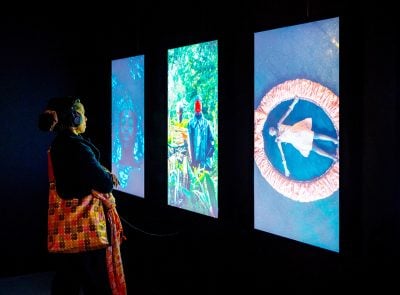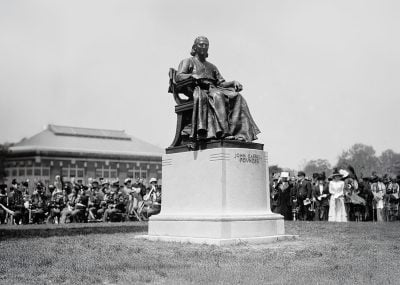In 2017, Nafal Hassani-Mohamed became frustrated when he was unable to purchase a high-quality suit for his wedding day in Kenya. Travelling frequently around eastern Africa for his employer, the Trade and Development Bank, the infrastructure finance specialist had little time to venture outside the continent to source the item. Reluctantly, the husband-to-be sent his measurements to friends in France who arranged to export an ill-fitting wedding suit.
Two years later, Hassani-Mohamed is the managing partner of Quintessence Tailor, a Nairobi-based luxury suit company which claims to match designer brands like Hugo Boss or Armani on quality.
“I can confidently say that the quality we offer here is better than most of the suits you find in Europe, the United States and Dubai,” he told African Business at his showroom in the Kenyan capital.
After clients are measured for size, the suits, which retail for between $750 and $2,000, are tailor-made at a production unit in Asia with a turnaround period of four weeks. Hassani-Mohamed claims that only the best cloths on the market are used: Dormeuil from France and Holland & Sherry from the United Kingdom.
The brand is targeting high net worth individuals (HNWIs) worth over one million dollars excluding their primary residences. According to the latest edition of The Wealth Report by Knight Frank, a property consultancy and estate agent, Kenya had 9,482 such individuals in 2018. Since launching his business in January 2019, Hassani-Mohamed says he has sold over 400 suits.
“The demand for luxury goods is increasing, you can just look at the statistics and the size of the market,” he says. “While in the past consumers in Kenya wanted any kind of suit, house or car, they are now much more demanding. That presents a very good opportunity for anyone who wants to deliver quality and luxury to the market, because the demand is there.”
Africa’s robust economic growth and booming population have given rise to an ever-expanding affluent class that underpins the growing demand for luxury goods. According to the Mauritius-based AfrAsia Bank’s Africa Wealth Report 2019, the total individual wealth held on the continent amounts to $2.2 trillion, with around 148,000 HNWIs. This wealth is expected to rise by 35% over the next nine years, reaching $3 trillion by the end of 2027.
The country in Africa with the most HNWIs is South Africa, with 39,200, followed by Egypt (16,700), Nigeria (9,900), Morocco (4,600) and Kenya (8,600).
The African luxury sector – including cars, clothing and accessories, watches, private jets, yachts and hotels – generated approximately $6.1bn in revenue in 2018. This is expected to increase, with Africa currently the world’s second-fastest growing region for the consumption of luxury goods, trailing only the Middle East.
Multinational expansion
Any venture into Nairobi’s vibrant nightlife scene reveals a city-wide love for Moët Hennessy’s flagship spirit: Hennessy cognac. In the most exclusive drinking spots, reserved for politicians and executives, the cognac is sipped neat during after-hours meetings, while in the more lively venues, young bankers and entrepreneurs order a bottle for a table of friends and drink it on ice.
Thanks to the promising growth outlook, well-known luxury brands like Hennessy are beginning to establish regional offices in Africa as they look to extend the reach of their products.
Speaking at a panel discussion on Kenya’s luxury market in Nairobi organised by the local French Chamber of Commerce, Anne-Claire Delamarre, general manager at Moët Hennessy for Eastern Africa and the Arabian Gulf, explained the factors behind the company’s market entrance in 2010: “While our brand has been available in Kenya for many years, we didn’t find the need for a regional office. From 10 years ago, we really saw a rise in the middle class. We found it enough to establish our office.”

Headquartered in Paris, Moët Hennessy belongs to LMVH; a multinational luxury goods conglomerate which also owns Louis Vuitton and Christian Dior. The company’s drinks include French classics such as Moët & Chandon, Krug, Veuve Clicquot, Hennessy and Château d’Yquem.
One of the reasons LMVH brands fetch such a high price is due to a rich history and narrative which the company carefully crafts around its goods. Communicating this brand messaging to wealthy African consumers is a central task in extending Moët Hennessy’s reach on the continent, Delamarre says.
“It takes time to train local consumers, to tell them the story of the brand and the history,” she says. “That is the value of being here, of being in the market.”
As the aspiring middle class continues to grow and spends more money, she adds that it may take up to 10 years to recruit a customer who will remain loyal to the brand. Brands often prove more compelling for consumers than origin countries – Hennessy, varieties of which can retail for more than $1000 in Nairobi’s stores, is believed by many to be a British spirit despite French-Irish origins.
Young and rich
At the heart of the demand for luxury is a young generation who use brands either as status symbols or to celebrate special occasions. In contrast to the older generation, social media is the primary driver of consumption, where advertisers urge younger consumers to emulate the lifestyle of celebrities and influencers. Products that highlight the lifestyle of internationally successful individuals, usually those steeped in entrepreneurial success, are highly sought after.
Kenyan photographer Mutua Matheka became the face of Hennessey after huge billboards were erected in Nairobi associating the spirit with his artistic, creative lifestyle. The “Never Stop. Never Settle” campaign highlighted eight entrepreneurs and creatives from Kenya, South Africa, Nigeria and Côte d’Ivoire, as Moët Hennessy seeks to tap into a younger generation of consumers.
If luxury brands are to take root on the continent, they must appeal to this millennial generation, who have a vastly different set of priorities from their forebears, according to market players.
Roberto Simone, general manager of the five-star Kempinski hotels in Kenya, says that the traditional hotel group are moving in a “new direction” to attract younger clients.
“To capture those new clients, we have to take a very new approach,” he says. “The customer is not like the customer of the past. They are looking for benefits. They are not looking at the hotel as a box. It’s not important what I will have at breakfast but the experience I will have in that room. Not for the food, but to take a picture of the food.”
Luxury brands use social media and the power of influencers to spread their message, increase product awareness, and engage with younger customers in a more intimate manner. Interactive events are a particularly important way to gain a toehold in target countries.
“I find that in Kenya, like in many other African markets, I tend to over-invest in events because events provide contact and knowledge transfer which a TV advertisement or billboard doesn’t,” says Mario Lazzaroni, sub-Saharan Africa manager for beauty group Estée Lauder, the French conglomerate behind brands such as Clinique, Lancôme, Sephora and MAC Cosmetics. Like Moët Hennessy, which also sponsors events, it seeks to educate would-be consumers about the value of its products.
In an interactive process, trained beauty professionals guide customers through the correct process of using its products – a key for bringing new customers into luxury skin care and make-up, Lazzaroni says. The New York-based company has opened five MAC Cosmetics stores across Nairobi, many in affluent malls.
Mall culture
This vibrant mall culture, which is particularly strong in Kenya, South Africa, Nigeria and Egypt, presents ample opportunities for luxury brands to establish high-end retail outlets in desirable locations.
For Kenya’s richer citizens, malls are the first port of call for luxury goods. There are currently over 30 malls in Nairobi and its environs, with the famous Westgate Mall catering to affluent local consumers and expats with a taste for Lacoste clothing, Hugo Boss fragrances, Bose audio equipment and Converse shoes. In Cape Town, the V&A Waterfront is a hub for fashion brands Louis Vuitton, Coach and Michael Kors.
While luxury goods are beginning to be purchased through e-commerce platforms like Jumia, the physical market still holds sway as a place to buy designer brands. Customers prioritise in-store expertise and advice when parting with their money.
But Africa’s diversity of sales points including malls, markets, online and street hawkers also pose problems. Along with a black market selling fake goods, companies contend with a grey market where unofficial traders sell legitimate goods. Many Estée Lauder products are brought to Kenya in suitcases from Dubai and sold in informal shops, Lazzaroni says. Goods are purchased during business and tourist trips, or are sent back to Africa by relatives and friends living abroad, undermining the full potential of local luxury retail and production.
As well as owning the product, a sales or production origin of New York or Paris confers prestige on the customer. According to Lazzaroni, this preference to “manage business deals remotely” is the reason why many luxury brands are not yet on the continent.
Those luxury goods multinationals that are attracted to the continent typically base themselves in the top performing economies. Companies looking to establish regional footholds will typically use Kenya, South Africa, Nigeria and Egypt to extend into the respective regions. Luxury goods in areas of conflict or poor economic growth are imported rather than sold by official distributors.
As in other parts of the world, Africa’s luxury goods market is vulnerable to economic and political shocks, including election cycles, which can upset an industry fundamentally reliant on wealth creation and excess capital.
Made in Africa?
The vagaries of economic growth and the persistence of this “buy abroad” culture are some of the challenges facing an emerging community of African designers and luxury producers.
“We love foreign,” says Lucia Musau, consulting partner at the African Elite Group, an East African PR firm helping to establish luxury brands in the region.
“A Louis Vuitton bag is $2,000. We have luxury bags. There is a Kenyan bag which is made out of cow skin at $1,500 – but we won’t spend on it. People are doing amazing pieces which you would consider luxury, it’s just that as Kenyans we are not spending enough on our own luxury.”
While luxury items and brands are produced across the continent, many struggle against the preference for established foreign brands, which are often backed up by more extensive marketing clout. Another problem is the difficulty associated with mass-producing African luxury at the scale of globally competitive brands. Most African luxury goods are produced by small-scale artisanal designers. Through economies of scale, international brands can produce products at relatively low prices, making them more affordable and accessible to the mass market. European and North American luxury firms have the advantage of being able to link to global supply chains thanks to low import tariffs and preferential bilateral or multilateral trade agreements.
Due to Africa’s poor manufacturing capacity, local factories struggle to mass produce top quality goods, meaning many local designers must outsource their craftmanship if they want to produce at a larger scale.
Hassani-Mohamed of Quintessence Tailor says he has been asked on numerous occasions to produce a suit at $500 for the mass market. While he has no intention of doing so, he says that the inability to manufacture high quality suits in Kenya and the exorbitant import duties paid at the border would mean a $500 suit is not commercially viable.
Due to these limitations, a “made in Africa” brand that is both luxury and available on the mass market is not yet possible. Yet innovators like Hassani-Mohamed are confident that luxury items which are both made in Africa and sold in Africa are not so far off.
“I am 100% convinced that Africa should be able to develop a brand which can compete with other global brands in the near future,” he says.
Want to continue reading? Subscribe today.
You've read all your free articles for this month! Subscribe now to enjoy full access to our content.
Digital Monthly
£8.00 / month
Receive full unlimited access to our articles, opinions, podcasts and more.
Digital Yearly
£70.00 / year
Our best value offer - save £26 and gain access to all of our digital content for an entire year!
 Sign in with Google
Sign in with Google 



